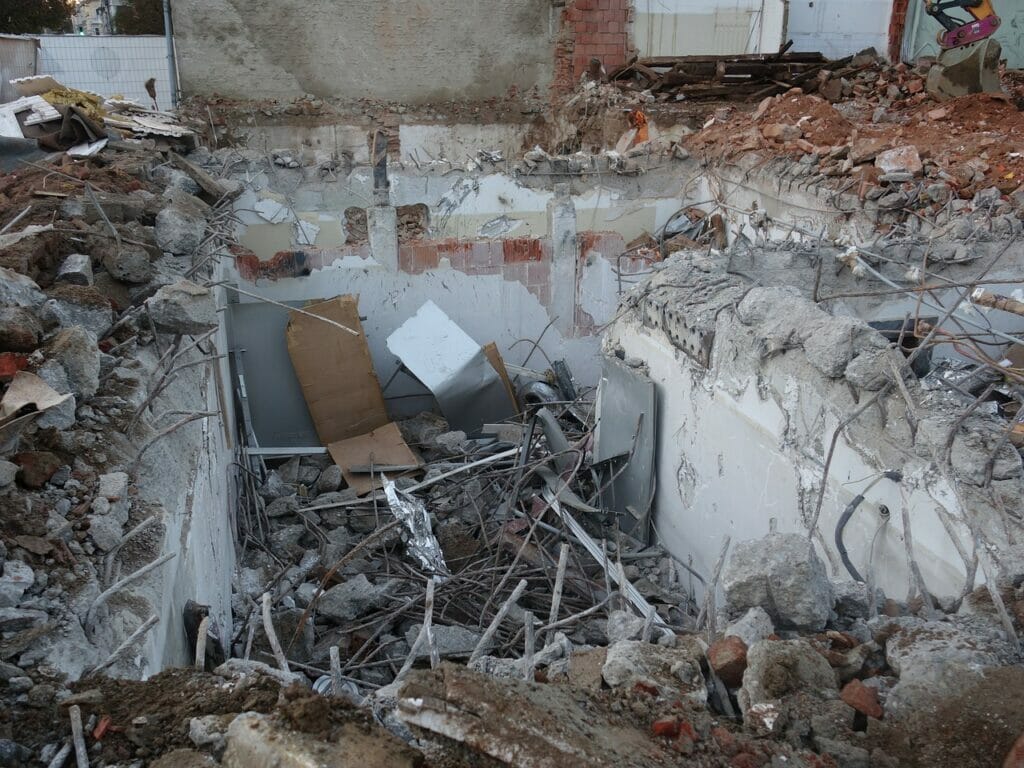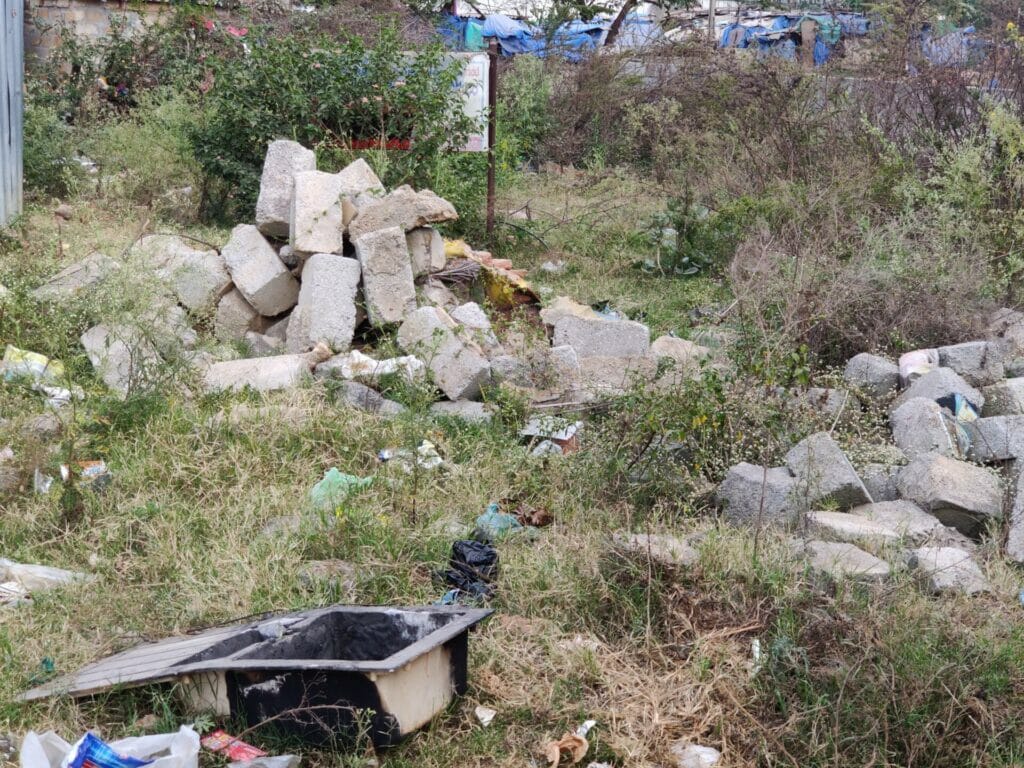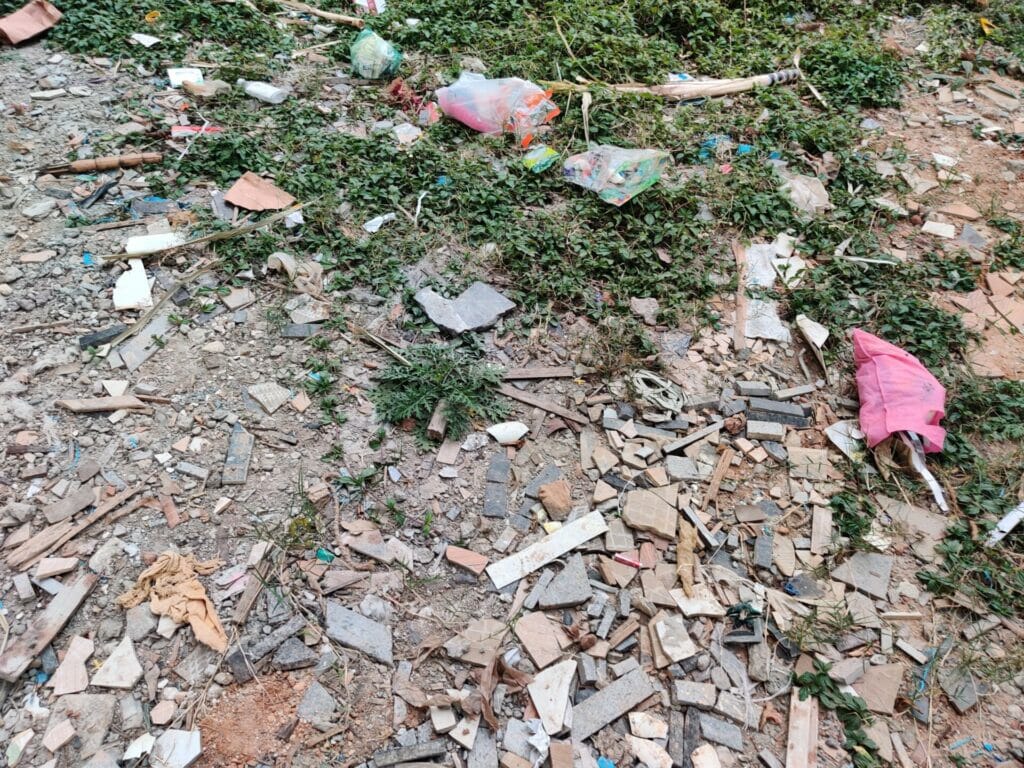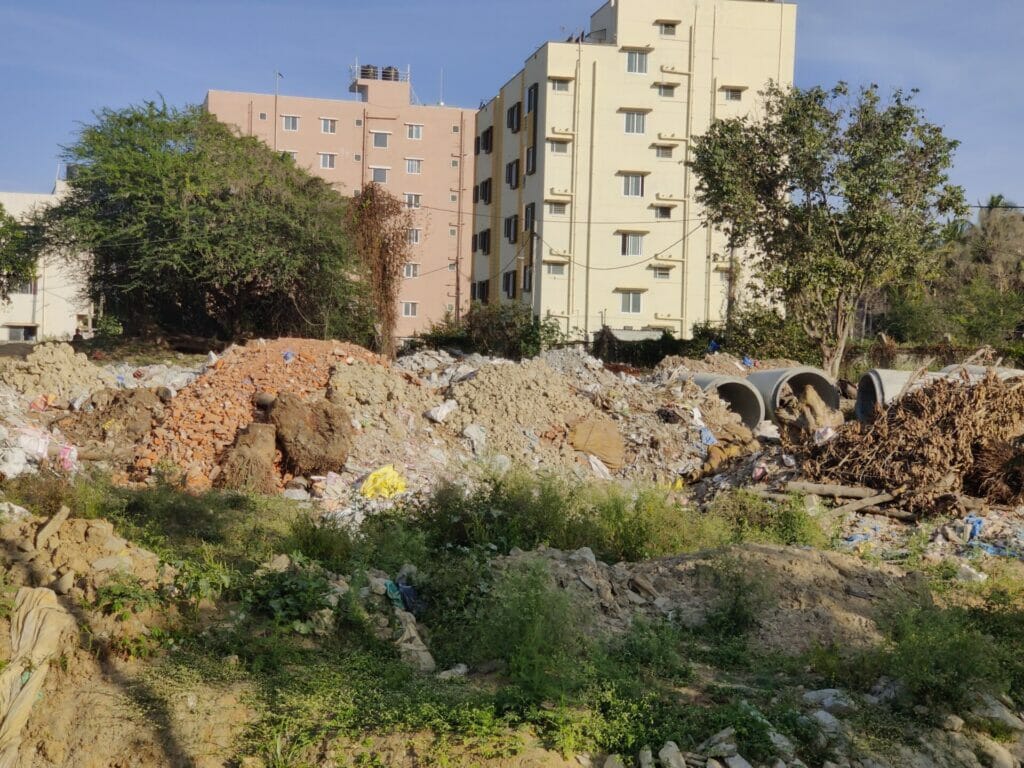In October 2022, the Bangalore Solid Waste Management Limited (BSWML), the company set up by BBMP for waste management, announced its decision to set up five new plants specifically to process construction and demolition waste. But does the city need five new plants?
As one of the fastest growing cities in the country, Bengaluru is constantly being broken down and built up. This steady influx of roads, flyovers, pavements and buildings result in a considerable amount of waste being generated in the form of a variety of materials, including leftover cement, broken concrete, glass, wood, granite.

Abandoned concrete blocks, piles of cement and even discarded toilets are a common sight on the streets. These discarded materials can clog up roads, footpaths, storm water drains, and lakes. Materials like cement also increase particulate matter in the atmosphere leading to higher levels of air pollution.
BBMP not addressing key issues
Activists and media have raised the alarm about rising levels of unmanaged construction waste in the city several times. To tackle this issue, BBMP has announced that they would create five new waste processing plants dedicated to recycling construction and demolition waste in the city.
But past reports, as well as current reactions of waste management experts, suggest that the civic body is not addressing key issues. According to the civic bodies, Bengaluru generates an average of 2,500 to 3,000 tonnes of construction waste per day, while other reports estimate much higher numbers in 2022. Much of this waste can be processed and reused for buildings and other infrastructure projects.
Thus, on the surface, BBMP’s plans appear to make sense. The civic body plans to create four plants capable of processing 500 tonnes of construction waste a day and one plant capable of processing 1,000 tonnes a day. But researchers, activists and even municipal officials have repeatedly pointed out that the city first needs better compliance of existing waste management rules.
The responsibility lies with those generating waste
According to the Construction and Demolition Waste Management rules (2016), the cost and the responsibility of disposing off construction waste lies with the person or entities generating the waste; this could be an organisation or individual involved in construction or demolition. The law also states that urban local bodies are responsible for implementing these rules in a planned manner.
For small amounts of construction waste, such as that generated during renovation or carpentry, citizens must store the waste at their premises and contact BBMP authorised collectors for removal. Bulk generators, those generating over 20 tonnes of construction waste per day or 300 tonnes per month, must seek prior approval from the BBMP.

These projects must submit site and building plans, provide an estimate of construction waste to be generated, and details of where the waste will be stored until authorised collectors take away the waste. Particularly in cases of new buildings, generators must also provide plans that detail how waste generation will be minimised and how materials will be reused.
Non-compliance with rules
Currently Bengaluru has three construction waste processing plants, none of which are operating at full capacity, because very few waste generators actually comply with the rules. A 2016 report by the Centre for Study of Science, Technology and Policy found that most bulk waste generators, such as construction companies, routinely sub-contracted the work of waste removal to private contractors. Similarly, demolition work in the city is often contracted to private companies, which in turn hire private trucks to collect and dispose of the construction waste.
Little seems to have changed in the six years. Several demolition company owners, who this reporter spoke to, said they had never formulated a comprehensive construction management plan, nor had they actually paid BBMP approved collectors to collect construction waste.
A demolition contractor from the city admitted that construction waste from their projects was usually transported at night and dumped in empty sites on the outskirts of the city. These sites vary depending on the demolition site. “If the demolition is in South Bangalore, the waste may be dumped in Kolar or on the way to Hosur. If it is in North Bangalore, it may be taken to villages near the airport,” said the demolition contractor, who wished to be anonymous.
Read more: Who is a ‘Bulk Generator’ of solid waste?
“Previously, we used to dump in ponds and lakes inside the city, but now people object so we have to travel very far outside the city,” he added. When asked about the environmental impact of construction waste, the demolition contractor expressed helplessness and said he was not aware of any other system.
Similarly, Nagaraj (who did not wish to reveal his full name) a building contractor from North Bengaluru said that he had never submitted a comprehensive construction management plan to BBMP and was not aware of who the approved BBMP collectors were. He always used private contractors to collect waste. “I have even arranged trucks for BBMP to collect construction waste in some areas,” he claimed.
Several BBMP commissioners have pointed out that compliance of the rules is the major issue when it came to construction waste management. The civic body appears to struggle to make even government bodies comply with these rules, according to media reports. Indeed, construction waste from BBMP and BWSSB projects is littered around the city. These can include pavement slabs or giant storm water drain pipes.

And even if a waste generator wished to follow the rules BBMP does not make it easy pointed out Pinky Chandran, founder of the Solid Waste Management Round Table, Bengaluru.
Inadequate information
BBMP had already designated seven sites as construction waste collection points– Mallasandra, Kadu Agrahara, Srinivasapura and Kogilu , Gollahalli, Kannur, Guddadahalli and Mittaganahalli in 2016, but these sites have not been utilised fully Pinky explained. The demolition contractor I spoke to said he was aware of the Kogilu site, but said that he didn’t know how to access the site.

Both Pinky and the demolition contractor also pointed out that most of the BBMP designated sites are quite far. “Why are there no aggregation centres in the city that can cater to 4-5 wards?” she wondered.
Although, the BBMP website explains the rules of construction waste management it has no details that waste generators can actually use. “Why is the BBMP website not showing the list of approved vendors? If you go to the page, there is no option to click for the list,” Pinky pointed out. Even the phone number listed on the website often says it is out of order.
The need for awareness campaigns
Finally, the BBMP has issued public notifications on construction and demolition waste management, there have been no sustained awareness programmes post this, Pinky pointed out. “But awareness must not only include where to dispose or how to dispose and on the guidelines, but also on the promotion of recycling markets for repurposing,” she added. “And the most important problem is the lack of data, which was also flagged by the CAG in 2018 and we have just not made any progress,” she added.
Working on better compliance, data collection, and awareness might lead to improvements in the construction waste collection process and even increase the amount of waste being recycled in the existing plants in the city. It is not clear why the civic body is planning five new plants while the existing ones are not working at capacity. The BBMP special commissioner for solid waste management was not reachable for a comment.
All the construction materials are dumped at gururaja layout doddanekundi, residential area next to burial ground